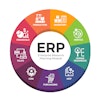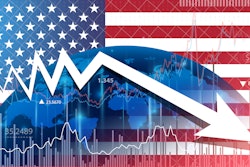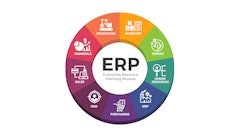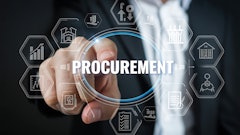
Supply chain disruptions are inevitable in today’s dynamic global market: Workplace safety issues, natural disasters, geopolitical tensions, cyber threats and changes in regulation to name a few. These challenges are complex and often occur simultaneously. They can upend a company’s procurement strategy in a matter of minutes, but they don’t have to.
Sustained supply chain durability—anticipating, adapting to and recovering from disruptions while keeping operations running smoothly—is possible. Companies can design performance in and disruption out. However, this opportunity is often missed because risk management processes frequently focus on symptoms rather than root causes. Businesses must move beyond standard risk monitoring and short-term mitigation planning to transform insights into actions that create a performance-based future.
Why? Simple—it’s a business imperative. Sources report average revenue losses from supply chain disruptions at 6-10% annually and margin erosion averaging up to 5% short term and as high as 50% for longer disruptions. Not to mention the loss of customer confidence.
The solution is supply chain and procurement intelligence that identifies risks, informs decisions and develops stronger strategies. There are three key elements to strong supply chain and procurement intelligence: Analytics, benchmarking and continuous improvement. When executed effectively, these components offer powerful information to identify risks; reveal opportunities; and drive smarter, data-informed decisions. They form the foundation for designing an agile procurement and supply chain strategy that not only adapts to changing conditions but builds sustained long-term value.
Turning raw data into meaningful insights
Supply chain disruptions have significant ripple effects on businesses. However, organizations need not be victims of this perpetual state of risk. The key is turning data into meaningful insights. The challenge in this isn’t the data itself—historical data is everywhere—but rather the analytics. It needs to be an iterative process of collection, analysis, benchmarking and action that offers a performance-based future, ending the cycle of crisis management, which dominates.
As part of that process, organizations must first continuously track key metrics. Second, they must look for correlations, trends and indications of risk and opportunity. For procurement, relevant KPIs often include total cost; should cost; order fulfillment; quality; lead time; on-time delivery; and mapping the impacts on revenue, margin and customer satisfaction.
However, although essential, these metrics alone do not provide enough insight into how supply chains may perform in the future. To build a more comprehensive picture, procurement should partner with stakeholders such as supply chain, operations and sales through processes like sales inventory and operations planning to forecast sales volumes, inventory and production levels. This valuable information helps plan orders, defines needs, guides profiling the market and helps plan production.
That said, like the stock market, past performance doesn’t guarantee future results. So, while supplier scorecards offer valuable information as to past supplier performance, procurement must also evaluate risk and potential disruptions. To do so effectively, they should rely on a range of information sources, including risk tools, that offer predictive indexes to examine past and current financial information coupled with operational information to predict the likelihood of bankruptcy or operational interruptions. Add in other elements such as ESG, cyber and safety and procurement develops more robust supplier profiles. This information fuels category and sourcing strategy, supply chain design and integrates risk analysis into these activities. This holistic approach is vital for success.
While the future can’t be predicted with certainty, procurement teams should leverage statistical analysis, accurate sales forecasting and effective demand planning to assess future risk, helping them prepare for, mitigate, and reduce significant risks to position their organizations for long-term success.
Remember, best-in-class organizations don’t just monitor data. Monitoring is a passive activity often fraught with complacency. Leading organizations use the power of information to proactively redesign the supply chain. They assess combinations of factors, compare potential outcomes and act. Rather than waiting for disruptions and reacting afterward, they work to eliminate potential impacts before they occur.
The power of benchmarking
Information fuels this process, and benchmarking is an essential component. Understanding where an organization currently stands in the marketplace—among peers, non-traditional companies and regionally—represents an often-underutilized step that is crucial for identifying vulnerabilities and opportunities. Benchmarking allows organizations to compare performance, costs, capabilities, productivity, safety and compliance. This process reveals risks, gaps and areas of competitive advantage to be exploited. Successful benchmarking begins with clearly understanding an organization’s goals, how to use the information and what questions to ask.
Benchmark information should come from multiple sources, including independent research as well as relevant organizations such as competitors. Modern SaaS solutions often include analytics tools that make benchmarking comparisons easier.
Curiosity and continuous improvement
Market conditions change quickly, so building a resilient supply chain must be a continual and proactive process. Regular reevaluation through continuous improvement (CI) is essential. This involves regularly analyzing data to uncover trends, regular benchmarking and focused efforts to identify the root causes. This analysis transforms raw data into actionable insights, empowering procurement to proactively implement strategies for lasting improvement.
Proven CI methodologies exist. The key is selecting a framework that fits the organization’s needs. Within all CI models, structured problem-solving methods provide the means to perform root cause analysis and develop effective solutions. As teams drive toward the root causes of risks and disruptions, tying solutions to KPIs and supporting them with benchmarks enables more effective strategies.
Procurement insight technology and existing risks
Today, with enabling technology available in the market, data analysis can happen almost instantly, unlike two decades ago. Procurement can and should leverage technology for faster data collection across multiple sources. AI-driven analytics tools can provide deeper insights. Scenario modeling tools like digital twins allow companies to model and plan for risks in a controlled environment to create both contingency plans before real disruptions occur and, more importantly, map alternate supply chain designs virtually to test assumptions before making changes.
It’s important to remember, however, that technology is not a silver bullet. It requires proper implementation and integration with people and processes. If technology stacks aren’t aligned with business goals, processes and people’s skills, companies risk missing the return on investment.
It’s critical for companies to avoid the tech trap—the belief that technology will save the day. No technology, whether it be tools like blockchain or an AI model alone, will protect an organization from risk. However, organizations with the right team, the right processes and the right technology attain a higher probability of success.
Driving insights into action
With the number of risks supply chains face, procurement intelligence is essential in building durable supply chains that lead to competitive advantage. Information in the hands of capable teams drives superior strategy and execution. By harnessing the power of analytics, benchmarking and continuous improvement, organizations can gain a clearer view of current performance and future risks. Through technology, procurement can enhance their procurement strategy’s data collection and analysis phase as well as resource allocation. This provides more time to transform information into actionable insights that drive intelligent decisions and reduce vulnerabilities, creating long-term value. Companies that invest in these capabilities position themselves not only to weather disruptions, but to end the cycle of being victims of circumstance by taking control and ensuring their own success.












